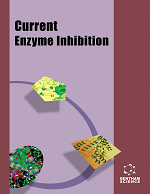-
s Quantitative Structure Activity Relationship and Design of Phenyl Alkyl Ketone Derivatives as Inhibitors of Phosphodiesterase 4
- Source: Current Enzyme Inhibition, Volume 10, Issue 1, May 2014, p. 68 - 80
-
- 01 May 2014
Abstract
A series of phenyl alkyl ketone derivatives based phosphodiesterase 4 (PDE4) inhibitors was subjected to 2D Quantitative Structure–Activity Relationships (2D QSAR) and Hologram Quantitative Structure–Activity Relationship (HQSAR) studies. The dataset was divided into training and test sets by applying K-means clustering, and 2D QSAR models were established using stepwise linear regression analysis, replacement method and enhanced replacement methods. The models obtained demonstrated high correlation coefficient (R2=0.8374) and low standard deviation (S=0.4442). The robustness of models was confirmed using leave one out cross validation (R2 cv=0.7189), Y scrambling (R2=0.3640), and by test set prediction (R2 pred=0.6867). Topological, steric, electronic and electrotopological descriptors of phenyl alkyl ketone derivatives showed good correlation with the PDE4 inhibitory activity. HQSAR models were established using various fragment sizes, hologram lengths and fragment types. The top HQSAR model was justified by high R2 value of 0.973 and R2 cv value of 0.641. New molecules were designed based on these results and the activity was predicted using the established models.


